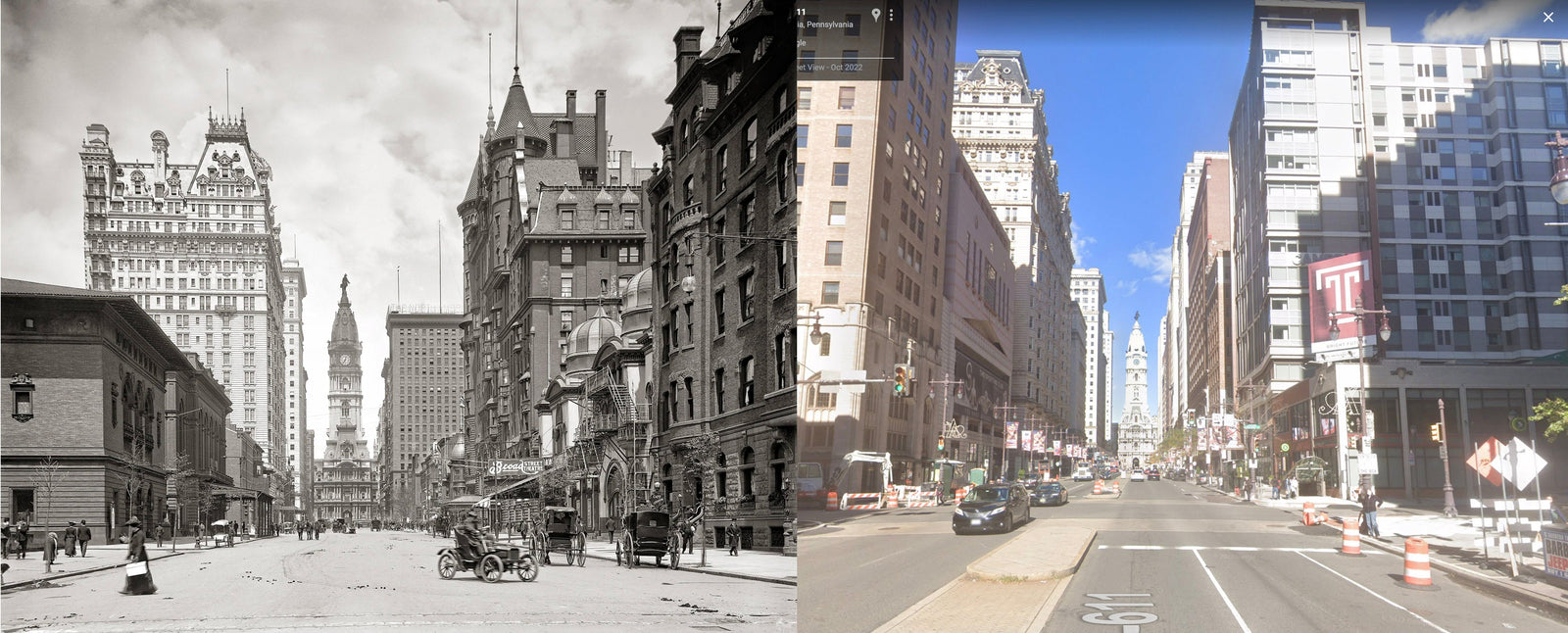Your Cart is Empty
Free and Fast Shipping | 30 Day Money Back Guarantee
Free and Fast Shipping | 30 Day Money Back Guarantee
Free and Fast Shipping | 30 Day Money Back Guarantee

2 min read
Philadelphia in the early 1900s
In the early 1900s, Spruce and Broad Streets in Philadelphia were bustling commercial and residential areas. The streets were lined with shops, offices, and homes, and were a hub of activity for the city's residents.
Philadelphia was a rapidly growing industrial city. It saw significant expansion in its manufacturing, transportation, and commerce industries. It also hosted major events such as the 1900 Exposition and the 1926 Sesquicentennial Exposition. Philadelphia was also a center for cultural and intellectual life, with institutions such as the Pennsylvania Academy of Fine Arts, the Franklin Institute, and the University of Pennsylvania. It also had a thriving African American community, and was a center of the civil rights movement.
At the time, Philadelphia was a major center of the civil rights movement. The city had a large African American population, and they faced significant racial discrimination and segregation. In response, a number of African American organizations and leaders, such as the National Association for the Advancement of Colored People (NAACP), were established to fight for equal rights. These groups organized marches, protests, and legal battles to challenge segregation and discrimination in areas such as housing, education, and employment. Additionally, Philadelphia was home to influential civil rights leaders such as W.E.B. Du Bois, Mary Church Terrell, and Robert Purvis.
Some of the largest industries in Philadelphia in the early 1900s were:
These industries helped to drive the city's economy and shape its development in the early 1900s. In addition, some events that also helped shape the city's history and development during this time were:
Comments will be approved before showing up.
Tha Quality was fantastic❗❗❗
Used grease or lard bucket was carried under rear axle to periodically grease wheel hubs. Very good video.
I'm super impressed how quickly the print got to Canada and the quality is worth every penny. Thank you so much, Gordon Parks is a hero to my partner and I'm sure he will love this surprise
Received as a gift and could not be happier with the quality of the print. Shipping container ensure this arrived in perfect condition.
Love the simplicity and vintage feel of this print. Plus- prickly + beauty theme.
Wow. What an incredible photograph, and I love the story behind it as well. Seller does excellent work, and I couldn't be more pleased.
Amazing photograph and beautifully reproduced. Excellent work and shipped quickly. Thanks so much.
Beautiful photo and amazing quality!
5 stars review from Claire
Image quality and the extent to which the image was packaged securely was perfect. Could not be happier with the product.
This image along with much of Thomas Hines' work is incredibly powerful. The brutality faced by these children makes our everyday hardships seem frivolous.
5 stars review from Pjewc191
Great item. Packed well for shipping. Shipped quickly.
arrived quickly and looks great!
Classic. Framed it, and hung it up.